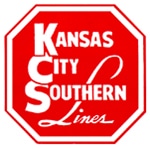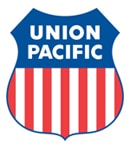BNSF reported a 16 percent increase in profit for the second quarter 2012 versus second quarter 2011.
BNSF’s second quarter 2012 operating ratio of 71.1 percent was a more than 3 percentage point improvement over second quarter 2011. Operating ratio is a railroad’s operating expenses expressed as a percentage of operating revenue, and is considered by economists to be the basic measure of carrier profitability. The lower the operating ratio, the more efficient the railroad.
BNSF operates in 28 states and two Canadian provinces

CN’s second quarter 2012 operating ratio of 61.3 was unchanged from second quarter 2011. Operating ratio is a railroad’s operating expenses expressed as a percentage of operating revenue, and is considered by economists to be the basic measure of carrier profitability. The lower the operating ratio, the more efficient the railroad.
CN is primarily a Canadian railroad. Its U.S. holdings include what were formerly Detroit, Toledo & Ironton; Elgin, Joliet & Eastern; Grand Trunk Western; Illinois Central; and Wisconsin Central.

CP’s second quarter 2012 operating ratio weakened to 82.5 percent from the second quarter 2011 operating ratio of 81.7. Operating ratio is a railroad’s operating expenses expressed as a percentage of operating revenue, and is considered by economists to be the basic measure of carrier profitability. The lower the operating ratio, the more efficient the railroad.
Canadian Pacific is primarily a Canadian railroad. Its U.S. holdings include Class I Soo Line and regional railroad Delaware & Hudson.

The CSX second quarter 2012 operating ratio of 68.7 percent was an improvement over the 69.3 percent operating ratio for the second quarter 2011. Operating ratio is a railroad’s operating expenses expressed as a percentage of operating revenue, and is considered by economists to be the basic measure of carrier profitability. The lower the operating ratio, the more efficient the railroad.
CSX operates some 21,000 route miles in 23 states and the District of Columbia.

KCS’s second quarter 2012 operating ratio of 70.5 was 1.2 percentage point improvement over the second quarter 2011 operating ratio of 71.7. Operating ratio is a railroad’s operating expenses expressed as a percentage of operating revenue, and is considered by economists to be the basic measure of carrier profitability. The lower the operating ratio, the more efficient the railroad.
KCS operates some 3,500 route miles in 10 states in the Central and South-Central U.S., as well as Kansas City Southern de Mexico, a primary Mexican rail line.
Norfolk Southern reported a 5.9 percent slide in profit for the second quarter 2012 versus second quarter 2011. Coal is a major source of revenue for Norfolk Southern, and a 15 percent plunge in coal revenue could not be offset by increases in revenue from automotive and chemicals traffic and trailers and containers.
NS’s second quarter 2012 operating ratio of 67.5 – a record quarterly low for the railroad — was a significant two-percentage-point improvement from the 69.5 percent operating ratio in second quarter 2011. Operating ratio is a railroad’s operating expenses expressed as a percentage of operating revenue, and is considered by economists to be the basic measure of carrier profitability. The lower the operating ratio, the more efficient the railroad.
Norfolk Southern operates some 20,000 route miles in 22 states and the District of Columbia.

Union Pacific’s second quarter 2012 operating ratio of 67.0 percent was a 4.3 percentage point improvement over the 71.3 percent operating ratio for the second quarter 2011. Operating ratio is a railroad’s operating expenses expressed as a percentage of operating revenue, and is considered by economists to be the basic measure of carrier profitability. The lower the operating ratio, the more efficient the railroad.
Union Pacific operates some 32,000 route miles in 23 states in the western two-thirds of the U.S.
BNSF second quartaer results have not yet been reported.